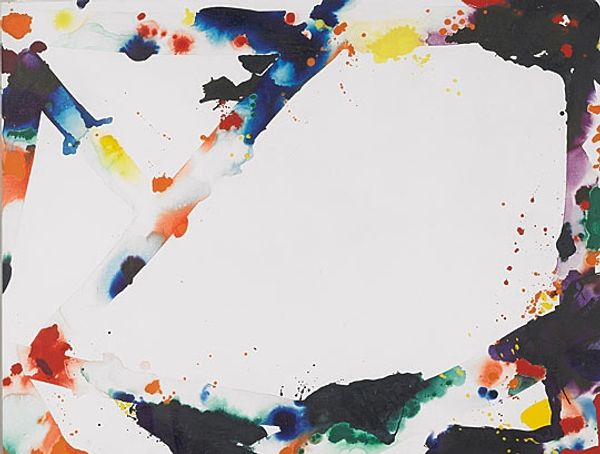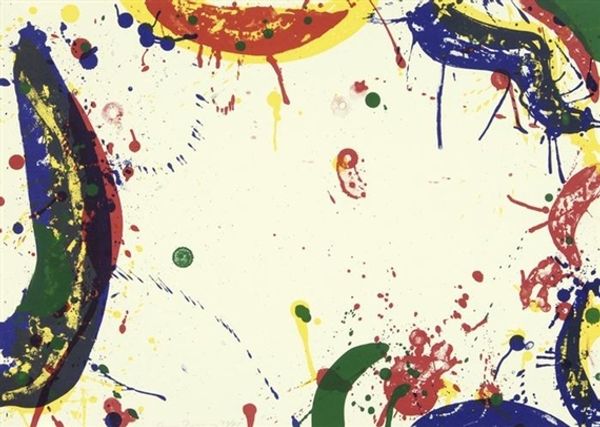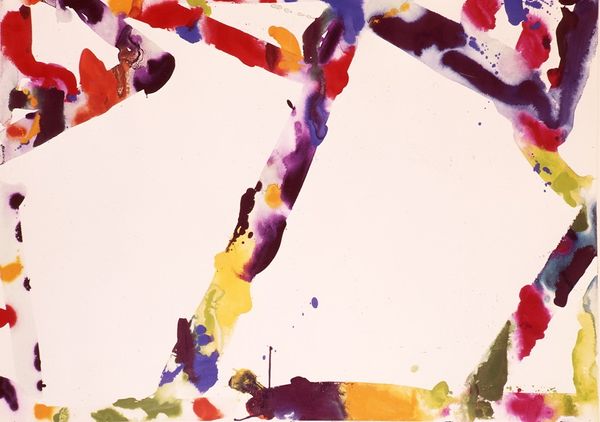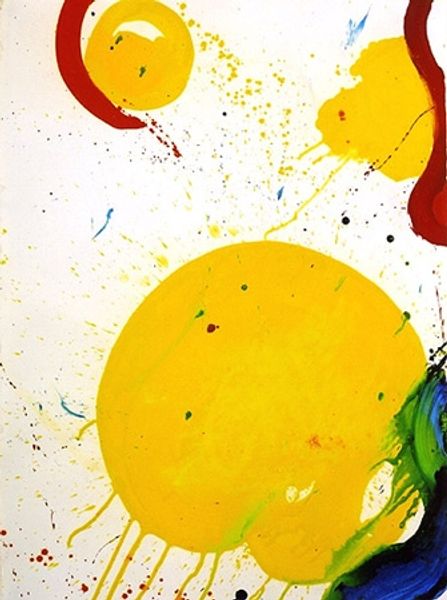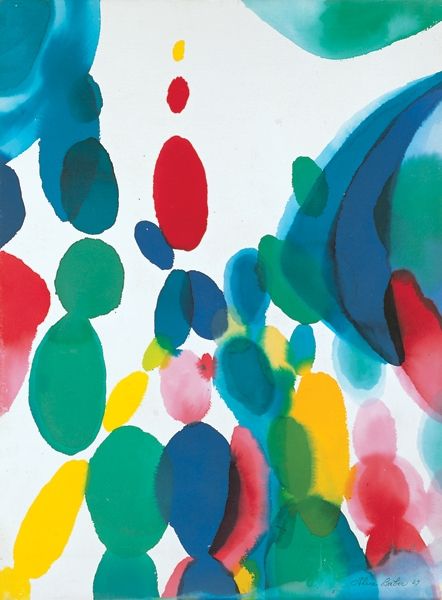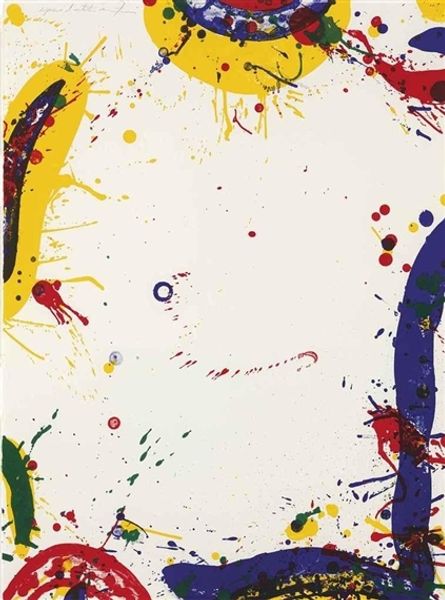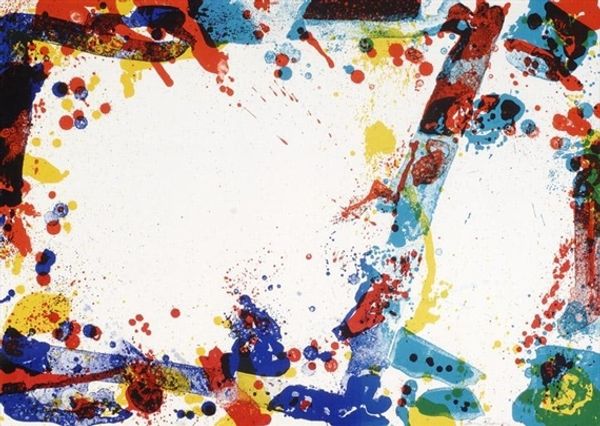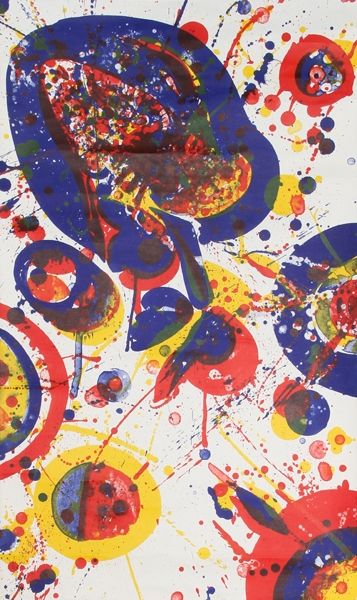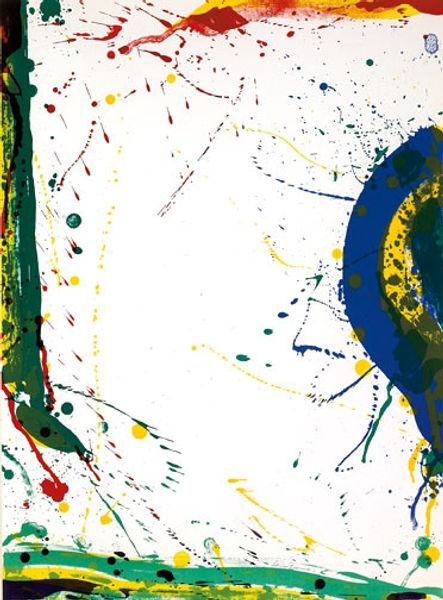
stain, acrylic-paint
#
abstract-expressionism
#
abstract expressionism
#
stain
#
acrylic-paint
#
fluid art
#
acrylic on canvas
#
abstraction
#
abstract art
Copyright: 2012 Sam Francis Foundation, California / Artists Rights Society (ARS), NY
Editor: This "Untitled" work by Sam Francis, made with acrylic paint and stain on canvas in 1968, feels almost like an explosion frozen in time. The bursts of color against the stark white… What do you see in this piece? Curator: The expansiveness is quite deliberate. In the late 60s, artists were really pushing against traditional art institutions. Francis's reliance on acrylic stains allows for a democratization of the canvas. There is a flatness here which intentionally rejects perspectival depth of academic painting and traditional ways of seeing that canvas should represent a window onto reality. Does the composition suggest any sort of spatial hierarchy to you? Editor: Not really, my eye sort of bounces around the canvas. There isn't one clear focal point; instead, there is just color everywhere that I can appreciate and admire without any spatial constraint. Curator: Exactly! And that's what makes it so revolutionary. Francis is literally dismantling the structures of traditional representation and questioning high versus low art through the medium of stain. These ‘stains’ or puddles reject any form of rigid boundary making. The work participates in art’s shift in thinking about what kind of material can become a form of cultural representation, what do we call 'art'. Editor: So, this 'Untitled' piece, is it also pushing against, well, titles themselves? Is there an effort here of trying to separate it from previous conceptions that titles can tell or constrain the visual language presented? Curator: Yes, very good point! 'Untitled' underscores its radical commitment to anti-representation by shunning traditional representational space and iconic narratives for open abstraction. Editor: I guess I didn't really grasp how much context impacts how we even see a painting, beyond just appreciating its beauty or technique! Curator: And that’s why engaging with the history allows us to understand art's complex conversation with the world it reflects and resists.
Comments
No comments
Be the first to comment and join the conversation on the ultimate creative platform.

